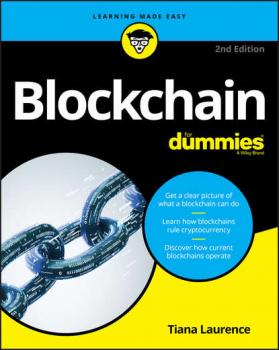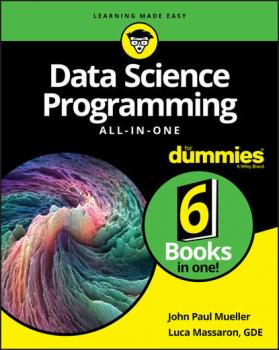Базы данных
Различные книги в жанре Базы данныхArgument Mining
This book is an introduction to the linguistic concepts of argumentation relevant for argument mining, an important research and development activity which can be viewed as a highly complex form of information retrieval, requiring high-level natural language processing technology. While the first four chapters develop the linguistic and conceptual aspects of argument expression, the last four are devoted to their application to argument mining. These chapters investigate the facets of argument annotation, as well as argument mining system architectures and evaluation. How annotations may be used to develop linguistic data and how to train learning algorithms is outlined. A simple implementation is then proposed. The book ends with an analysis of non-verbal argumentative discourse. Argument Mining is an introductory book for engineers or students of linguistics, artificial intelligence and natural language processing. Most, if not all, the concepts of argumentation crucial for argument mining are carefully introduced and illustrated in a simple manner.
Blockchain For Dummies
Unravel the mysteries of blockchains Blockchain technologies are disrupting some of the world’s biggest industries. Blockchain For Dummies provides a fast way to catch up with the essentials of this quickly evolving tech. Written by an author involved in founding and analyzing blockchain solutions, this book serves to help those who need to understand what a blockchain can do (and can't do). This revised edition walks you through how a blockchainsecurely records data across independent networks. It offers a tour of some of the world’s best-known blockchains, including those that power Bitcoin and other cryptocurrencies. It also provides a glance at how blockchain solutions are affecting the worlds of finance, supply chain management, insurance, and governments. Get a clear picture of what a blockchain can do Learn how blockchains rule cryptocurrency and smart contracts Discover current blockchains and how each of them work Test blockchain apps Blockchain has become the critical buzzword in the world of financial technology and transaction security – and now you can make sense of it with the help of this essential guide.
Data Science Programming All-In-One For Dummies
Your logical, linear guide to the fundamentals of data science programming Data science is exploding—in a good way—with a forecast of 1. 7 megabytes of new information created every second for each human being on the planet by 2020 and 11. 5 million job openings by 2026. It clearly pays dividends to be in the know. This friendly guide charts a path through the fundamentals of data science and then delves into the actual work: linear regression, logical regression, machine learning, neural networks, recommender engines, and cross-validation of models. Data Science Programming All-In-One For Dummies is a compilation of the key data science, machine learning, and deep learning programming languages: Python and R. It helps you decide which programming languages are best for specific data science needs. It also gives you the guidelines to build your own projects to solve problems in real time. Get grounded: the ideal start for new data professionals What lies ahead: learn about specific areas that data is transforming Be meaningful: find out how to tell your data story See clearly: pick up the art of visualization Whether you’re a beginning student or already mid-career, get your copy now and add even more meaning to your life—and everyone else’s!
The Data Warehouse Lifecycle Toolkit
A thorough update to the industry standard for designing, developing, and deploying data warehouse and business intelligence systems The world of data warehousing has changed remarkably since the first edition of The Data Warehouse Lifecycle Toolkit was published in 1998. In that time, the data warehouse industry has reached full maturity and acceptance, hardware and software have made staggering advances, and the techniques promoted in the premiere edition of this book have been adopted by nearly all data warehouse vendors and practitioners. In addition, the term «business intelligence» emerged to reflect the mission of the data warehouse: wrangling the data out of source systems, cleaning it, and delivering it to add value to the business. Ralph Kimball and his colleagues have refined the original set of Lifecycle methods and techniques based on their consulting and training experience. The authors understand first-hand that a data warehousing/business intelligence (DW/BI) system needs to change as fast as its surrounding organization evolves. To that end, they walk you through the detailed steps of designing, developing, and deploying a DW/BI system. You'll learn to create adaptable systems that deliver data and analyses to business users so they can make better business decisions.
The Data Warehouse ETL Toolkit
Cowritten by Ralph Kimball, the world's leading data warehousing authority, whose previous books have sold more than 150,000 copies Delivers real-world solutions for the most time- and labor-intensive portion of data warehousing-data staging, or the extract, transform, load (ETL) process Delineates best practices for extracting data from scattered sources, removing redundant and inaccurate data, transforming the remaining data into correctly formatted data structures, and then loading the end product into the data warehouse Offers proven time-saving ETL techniques, comprehensive guidance on building dimensional structures, and crucial advice on ensuring data quality
Mastering the SAP Business Information Warehouse
This book is insightful and thought-provoking for even the most seasoned SAP BW individual. —Richard M. Dunning, Chair, American SAP Users Group Written by the leading experts in the field, this comprehensive guide shows you how to implement the SAP Business Information Warehouse (BW) and create useful applications for business analysis of company-wide data. You'll quickly learn how to design, build, analyze, and administer the data and information in the SAP BW component. The authors present the material in a way that reflects the process an organization goes through during a software implementation. They begin with an introduction to the fundamentals of data warehousing and business intelligence, helping you determine if SAP BW is right for your organization. The book then focuses on the business content and options available when trying to deliver value from the data stored in the SAP BW. And it includes a methodology for implementing the BW, such as data modeling and techniques for capturing and transforming data. With this book, you'll discover the options available in SAP BW 3.0 and explore a new way to drive business performance. It will show you how to: Tackle such challenges as eliminating poor data quality Develop an information model in order to properly deploy SAP BW Utilize ETL, data storage, information access, analysis, and presentation services Schedule, monitor, archive, and troubleshoot data loads Effectively plan and manage the performance of a data warehouse The companion Web site provides useful guides and templates for configuring your system, industry case studies, and additional updates.
MDX Solutions
Serving as both a tutorial and a reference guide to the MDX (Multidimensional Expressions) query language, this book shows data warehouse developers what they need to know to build effective multidimensional data warehouses After a brief overview of the MDX language and a look at how it is used to access data in sophisticated, multidimensional databases and data warehousing, the authors move directly to providing practical examples of MDX in use New material covers changes in the MDX language itself as well as major changes in its implementation with the latest software releases of Microsoft SQL Server Analysis Services 2005 and Hyperion Essbase Also covers more advanced techniques, like aggregation, query templates, and MDX optimization, and shows users what they need to know to access and analyze data to make better business decisions Note: CD-ROM/DVD and other supplementary materials are not included as part of eBook file.
Data Warehousing Fundamentals
Geared to IT professionals eager to get into the all-important field of data warehousing, this book explores all topics needed by those who design and implement data warehouses. Readers will learn about planning requirements, architecture, infrastructure, data preparation, information delivery, implementation, and maintenance. They'll also find a wealth of industry examples garnered from the author's 25 years of experience in designing and implementing databases and data warehouse applications for major corporations. Market: IT Professionals, Consultants.
Data Mining Cookbook
Increase profits and reduce costs by utilizing this collection of models of the most commonly asked data mining questions In order to find new ways to improve customer sales and support, and as well as manage risk, business managers must be able to mine company databases. This book provides a step-by-step guide to creating and implementing models of the most commonly asked data mining questions. Readers will learn how to prepare data to mine, and develop accurate data mining questions. The author, who has over ten years of data mining experience, also provides actual tested models of specific data mining questions for marketing, sales, customer service and retention, and risk management. A CD-ROM, sold separately, provides these models for reader use.









